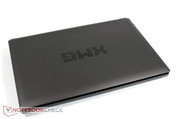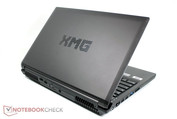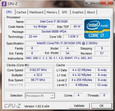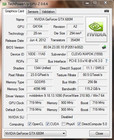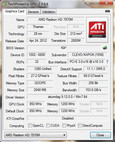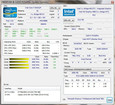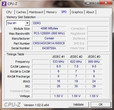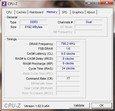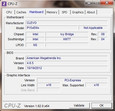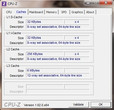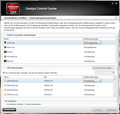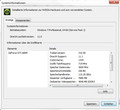Review Update: Radeon HD 7970M vs. GeForce GTX 680M
For the original German review, see here.
Nearly 60,000 hits and more than 1,200 comments on 80+ pages: Our forum thread »Radeon HD 7970M problems« proves that AMD's mobile high-end graphics card was even months after its launch anything but mature. Driver and dynamic graphics switching (Enduro) especially caused disappointments.
Although AMD promised optimizations, the improvements were only small. Despite several performance gains and bug fixes, the graphics card never worked completely as it was advertised. Only since Catalyst 12.11 Beta, which brought some innovations, did it begin to function reasonably well, but still not without its problems.
With the brand new WHOL certified Catalyst 13.1, the Radeon HD 7970M should finally be able to fix these problems and perform better than the GeForce GTX 680M. As we already scrutinized emissions (temperature, noise etc.) and power efficiency in our first test, we will focus on raw performance speed in this article. Does this updated comparison test draw any new conclusions?
Many thanks to the American colleagues from AMD, who not only provided us with game keys and new drivers during the last few months, but also answered many of our own questions during the process.
Test system
We used the Clevo P150EM barebone, a 15.6 inch gaming notebook, as the test system (Schenker XMG P502 PRO), which we frequently use for our in our gaming articles (see e.g. Dishonored). The model is based on Intel's HM 77 chipset and features a Core i7 3610QM, a 2.3-3.3 GHz fast quad core CPU. Although several 3D games benefit from powerful CPUs (see »Ivy Bridge Guide for Gamers«), the quad core is sufficient for the following results.
In order to avoid potential limitations, the processor is supported by 2x 4096 MB DDR3 RAM (Corsair Vengeance @ 1600 MHz). We installed the benchmarks on a 750 GB hybrid hard drive (Seagate Momentus XT). The OS (Windows 7 Professional 64 Bit) was freshly installed and completely updated. The Radeon HD 7970M was accelerated by the Catalyst 13.1 and the GeForce GTX 680M used ForceWare 310.90, which is WHQL-certified as well.
AMD news
During the last month, AMD has been working tirelessly on the graphics switching and overall general performance for its graphics drivers. Although Nvidia's Optimus technology still performs better (Optimus is more reliable and features more visual notifications and comfortable functions), Enduro is now fairly useful.
For example, we can no longer complain about missing configuration options. You can also change global settings (separately for battery and mains operation) via the »Switchable graphics – global settings« menu in the Catalyst Control Center. As the game recognition is still rather poor (only about 50% of the titles were automatically assigned to the Radeon HD7970M), hardcore gamers should change this option to »Maximize performance«. Thereafter, each 3D program will run on the dedicated GPU.
There are further options under »Switchable graphics – application settings«. Besides installed programs, it also lists all applications recently run. A simple mouse click assigns the desired graphics card for each program (maximum performance = Radeon HD 7970M, energy saving = HD Graphics 4000). The old menu only listed a small selection of running applications and would sometimes forget user settings completely.
Blue and black screen problems of old appear to be a thing of the past. In addition, the performance has increased significantly. We measured a small to notable performance gain in 8 of 20 games when compared to earlier benchmarks. Nevertheless, AMD should not stop their efforts. An active graphics switch still unnecessarily slows down general performance (see 3DMark 03 score). Non-Enduro devices like the Clevo P370EM (Schenker XMG P722 PRO) or notebooks with optional a non-Enduro mode like the Alienware M17x R4 perform better in several applications.
Overall, the driver development is decent, but still requires improvements in some aspects. The following table lists the major fixes and what still needs more attention:
| Known Problems | apparently fixed | meanwhile not that frequent or less intensive | continue to exist |
|---|---|---|---|
| Black screens while or after the driver installation (especially with original Clevo driver) | X | ||
| Periodic blue screens (usually right after boot) | X | ||
| Poor game recognition of Enduro ("not assigned" instead of "max performance") | X | ||
| Partly high performance loss with active graphics switch | X | ||
| Programs to not recognize the graphics card correctly (HD Graphics 4000 is displayed) or have difficulties reading the information (temperature, specs etc.) | X | ||
| Crashes, graphics errors, or other bugs in specific games (see below) | X |
We noticed several graphical flaws in a number of games, some of which were also prominent in our previous comparison review:
- Far Cry 3: annoying graphical errors (black blocks) in DirectX-11 mode
- Assassin's Creed III: very low performance
- F1 2012: The race simulation refuses to start
- Borderlands 2: Display errors (black line at the bottom)
- Modern Warfare 3: delayed loading and strange stuttering depite high frame rate
Nvidia news
Since the driver for the GeForce GTX 680M was already very mature at launch, Nvidia only released the usual bug fixes and performance optimizations with its latest version. Although the performance gain is slightly lower as the Radeon HD 7970M's, games now run smoother than before.
Hitman: Absolution has improved most. While the GeForce GTX 680M with ForceWare 310.61 only achieved 23 fps in maximum settings, ForceWare 310.90 and the current patch improve performance by nearly 20 % to 27 fps.
There is absolutely nothing to complain about the graphics switching technology as Optimus worked reliably and as expected during testing.
Synthetic benchmarks
In the synthetic benchmarks, the Radeon HD 7970M now performs notably better. Most notably, results from 3DMark 11 is most striking. With a GPU score of 6,272 points, the AMD graphics is now about 10% better than the GeForce GTX 680M (5,624 points).
The Radeon HD 7970M also wins in 3DMark Vantage (23,348 vs. 21,489 points) and in 3DMark 06 (22,599 vs. 21,897 points). In our initial test, it was the GeForce GTX 680M that came out on top. In contrast, Nvidia still scores higher in both 3DMark 05 are 3DMark 03.
In several benchmarks like the experience index from Windows 7 (7.7 points) or Unigine Heaven 3.0 (nearly 58 fps at 1,920 x 1,080 pixels, max details and normal tessellation settings), both high-end graphics cards returned very similar results. In the Unigine Heaven 2.1 benchmark (1,280 x 1,024, high, tessellation normal), the AMD card came out slightly faster (83 vs. 78 fps).
| Unigine Heaven 3.0 - 1920x1080 DX 11, Normal Tessellation, High Shaders AA:Off AF:Off (sort by value) | |
| Radeon HD 7970M (Catalyst 13.1) | |
| GeForce GTX 680M (ForceWare 310.90) | |
| Unigine Heaven 2.1 - 1280x1024 high, Tesselation (normal), DirectX11 AA:off AF:1x (sort by value) | |
| Radeon HD 7970M (Catalyst 13.1) | |
| GeForce GTX 680M (ForceWare 310.90) | |
| 3DMark 11 - 1280x720 Performance GPU (sort by value) | |
| Radeon HD 7970M (Catalyst 13.1) | |
| GeForce GTX 680M (ForceWare 310.90) | |
| 3DMark Vantage - 1280x1024 P GPU no PhysX (sort by value) | |
| Radeon HD 7970M (Catalyst 13.1) | |
| GeForce GTX 680M (ForceWare 310.90) | |
| 3DMark 06 - 1280x1024 Standard Score AA:0x AF:0x (sort by value) | |
| Radeon HD 7970M (Catalyst 13.1) | |
| GeForce GTX 680M (ForceWare 310.90) | |
| 3DMark 05 - 1024x768 Standard AA:0x AF:0x (sort by value) | |
| Radeon HD 7970M (Catalyst 13.1) | |
| GeForce GTX 680M (ForceWare 310.90) | |
| 3DMark 03 - 1024x768 Standard AA:0x AF:0x (sort by value) | |
| Radeon HD 7970M (Catalyst 13.1) | |
| GeForce GTX 680M (ForceWare 310.90) | |
| Windows 7 Experience Index | |
| Gaming graphics (sort by value) | |
| Radeon HD 7970M (Catalyst 13.1) | |
| GeForce GTX 680M (ForceWare 310.90) | |
| Graphics (sort by value) | |
| Radeon HD 7970M (Catalyst 13.1) | |
| GeForce GTX 680M (ForceWare 310.90) | |
Gaming Performance
The practical gaming benchmarks are a hot head-to-head race as well. While the performance differences are at best 10% in most titles (Call of Duty: Black Ops II, Medal of Honor: Warfighter, Need for Speed: Most Wanted, Guild Wars 2, Darksiders II, Dirt: Showdown, Risen 2, Alan Wake, The Elder Scrolls V: Skyrim, Anno 2070 and Battlefield 3), there are significant differences in several games.
For example, the Radeon HD 7970M performs more smoothly in Far Cry 3 (+15 %), Hitman: Absolution (+22 %), Sleeping Dogs (+28 %), and Max Payne 3 (+32 %). This is not surprising as many of these listed titles belong to AMD's »Gaming Evolved« program. In contrast, the GeForce GTX 680M scores higher frames in Dishonored (+19 %), Borderlands 2 (+19 %), Assassin's Creed III (+39 %), Call of Duty: Modern Warfare 3 (+49 %), and Diablo III (+65 %).
Thanks to the enormous lead in the last three titles, the Nvidia GPU is more or less 5 % ahead of the AMD card - a negligible difference. With regards to costs, however, the performance of the Radeon HD 7970M is truly impressive as the 680M can run users $400 USD more than the Radeon. Nvidia's high-end graphics card continues to have very poor value per dollar.
Note that all measurements were done at 1,920 x 1,080 pixels, max graphics options and - if available - 4x anti-aliasing. We ran each benchmark twice and have presented the averages below.
| Far Cry 3 - 1920x1080 DX11 Ultra Preset (HDAO, Enhanced Alpha To Coverage) AA:4x MS (sort by value) | |
| Radeon HD 7970M (Catalyst 13.1) | |
| GeForce GTX 680M (ForceWare 310.90) | |
| Assassin´s Creed III - 1920x1080 Very High (sort by value) | |
| Radeon HD 7970M (Catalyst 13.1) | |
| GeForce GTX 680M (ForceWare 310.90) | |
| Hitman: Absolution - 1920x1080 Ultra Preset AA:4xMS AF:16x (sort by value) | |
| Radeon HD 7970M (Catalyst 13.1) | |
| GeForce GTX 680M (ForceWare 310.90) | |
| Call of Duty: Black Ops 2 - 1920x1080 (Extra) High / On, FXAA AA:4xMS (sort by value) | |
| Radeon HD 7970M (Catalyst 13.1) | |
| GeForce GTX 680M (ForceWare 310.90) | |
| Need for Speed: Most Wanted - 1920x1080 High / On (sort by value) | |
| Radeon HD 7970M (Catalyst 13.1) | |
| GeForce GTX 680M (ForceWare 310.90) | |
| Medal of Honor: Warfighter - 1920x1080 Ultra Preset AA:4xMS AF:16x (sort by value) | |
| Radeon HD 7970M (Catalyst 13.1) | |
| GeForce GTX 680M (ForceWare 310.90) | |
| Dishonored - 1920x1080 High / On, FOV: 75 AA:FX (sort by value) | |
| Radeon HD 7970M (Catalyst 13.1) | |
| GeForce GTX 680M (ForceWare 310.90) | |
| Borderlands 2 - 1920x1080 (Ultra) High / On (PhysX low) AA:FX AF:8x (sort by value) | |
| Radeon HD 7970M (Catalyst 13.1) | |
| GeForce GTX 680M (ForceWare 310.90) | |
| Guild Wars 2 - 1920x1080 All Maximum / On AA:FX (sort by value) | |
| Radeon HD 7970M (Catalyst 13.1) | |
| GeForce GTX 680M (ForceWare 310.90) | |
| Sleeping Dogs - 1920x1080 Extreme Preset AA:Extreme (sort by value) | |
| Radeon HD 7970M (Catalyst 13.1) | |
| GeForce GTX 680M (ForceWare 310.90) | |
| Darksiders II - 1920x1080 2/4 Shadows, No Ambient Occlusion, AA:Low (sort by value) | |
| Radeon HD 7970M (Catalyst 13.1) | |
| GeForce GTX 680M (ForceWare 310.90) | |
| Max Payne 3 - 1920x1080 Very High, DX11 AA:Very High FX AF:8x (sort by value) | |
| Radeon HD 7970M (Catalyst 13.1) | |
| GeForce GTX 680M (ForceWare 310.90) | |
| Dirt Showdown - 1920x1080 Ultra Preset AA:4xMS (sort by value) | |
| Radeon HD 7970M (Catalyst 13.1) | |
| GeForce GTX 680M (ForceWare 310.90) | |
| Diablo III - 1920x1080 High AA:on (sort by value) | |
| Radeon HD 7970M (Catalyst 13.1) | |
| GeForce GTX 680M (ForceWare 310.90) | |
| Risen 2: Dark Waters - 1920x1080 Ultra / on AA:on AF:8x (sort by value) | |
| Radeon HD 7970M (Catalyst 13.1) | |
| GeForce GTX 680M (ForceWare 310.90) | |
| Alan Wake - 1920x1080 High Preset AA:4x AF:8x (sort by value) | |
| Radeon HD 7970M (Catalyst 13.1) | |
| GeForce GTX 680M (ForceWare 310.90) | |
| Anno 2070 - 1920x1080 Very High Preset AA:on AF:4x (sort by value) | |
| Radeon HD 7970M (Catalyst 13.1) | |
| GeForce GTX 680M (ForceWare 310.90) | |
| The Elder Scrolls V: Skyrim - 1920x1080 Ultra Preset AA:8x AF:16x (sort by value) | |
| Radeon HD 7970M (Catalyst 13.1) | |
| GeForce GTX 680M (ForceWare 310.90) | |
| CoD: Modern Warfare 3 - 1920x1080 Extra, all on, Image Quality: Native AA:4x (sort by value) | |
| Radeon HD 7970M (Catalyst 13.1) | |
| GeForce GTX 680M (ForceWare 310.90) | |
| Battlefield 3 - 1920x1080 ultra AA:4x MS AF:16x (sort by value) | |
| Radeon HD 7970M (Catalyst 13.1) | |
| GeForce GTX 680M (ForceWare 310.90) | |
Verdict
On a performance level, AMD is well on its way to outperforming the GeForce GTX 680M. Many improvements - both in synthetic 3D programs and games - allow the Radeon HD 7970M to run notably smoother than it did just 6 months ago.
However, Enduro is still inferior to Optimus on almost all levels despite the small optimizations. Although Enduro does not work perfectly, the technology is now slightly easier to work with as its new (and overdue) settings bring Enduro closer to Nvidia's Optimus. The biggest bugs (blue screens) also seem to be resolved. Together with the moderate price, budget-conscious gaming enthusiasts can now go for a 7970M without hesitation or anxiety from poor drivers.
The GeForce GTX 680M can only justify its higher price to some extent. The reader has to decide whether the superior energy efficiency, bigger feature set (3D Vision, PhysX etc.), and better driver support are worth the surcharge. As it stands in this review, Notebookcheck would recommend the Radeon HD 7970M to price-conscious consumers. Nvidia may finally have to lower the price of its #1 mobile GPU to stay attractive for core gamers.
| Radeon HD 7970M | GeForce GTX 680M | |
| Pro | Performance on GTX-680M level not all too expensive |
slightly more energy efficient than the HD 7970M mature driver |
| Contra | graphics switch could be better | high price |





